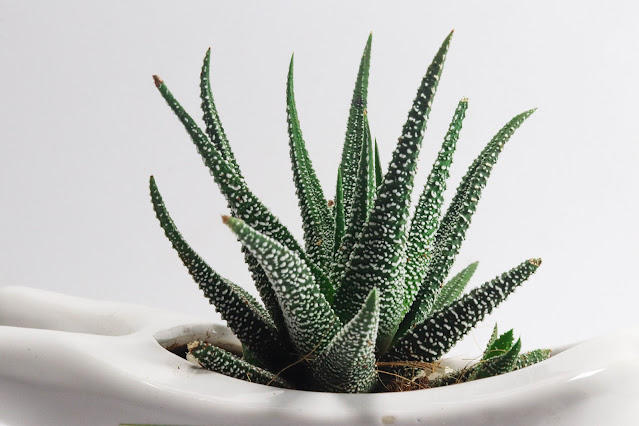Indoor gardening can be made easy with succulent plants, as they require minimal maintenance and can add a touch of green to any space. In this article, we will be discussing more than ten types of indoor succulent plants, along with their unique characteristics and benefits.
Aloe Vera: Aloe Vera is a popular indoor succulent plant due to its medicinal properties. It has fleshy, pointed leaves and a vibrant green color. It is easy to care for and can be used to treat minor burns, cuts, and skin irritations.
Echeveria: Echeveria is a genus of flowering plants in the family Crassulaceae, native to Mexico and Central America. They have rosette-shaped leaves that range in color from pale green to pink and red. They are often used in decorative pots and containers and are perfect for indoor gardening.
Haworthia: Haworthia is another genus of succulent plants in the family Asphodelaceae. They are native to Southern Africa and have rosette-shaped leaves with white stripes or spots. Haworthia is a low-maintenance plant perfect for indoor gardening and is a great choice for beginners.
Jade Plant: The Jade Plant, also known as the Crassula ovata, is a popular indoor succulent due to its ease of care and attractive appearance. It has thick, round leaves and can grow up to 3 feet tall. It is believed to bring good luck and prosperity when placed in a home or office.
Christmas Cactus: The Christmas Cactus, also known as the Schlumbergera, is a popular indoor succulent that blooms around the holiday season. It has flat, segmented leaves and vibrant pink or red flowers. It is easy to care for and adds a festive touch to any indoor garden.
String of Pearls: The String of Pearls, also known as Senecio rowleyanus, is a unique indoor succulent with long, trailing stems and small, bead-like leaves. It is perfect for hanging baskets and adds a touch of elegance to any room.
Zebra Plant: The Zebra Plant, also known as the Haworthia attenuata, is a popular indoor succulent due to its striking appearance. It has white stripes or spots on its leaves and can grow up to 8 inches tall. It is a low-maintenance plant that is perfect for indoor gardening.
Crown of Thorns: The Crown of Thorns, also known as Euphorbia milii, is a beautiful indoor succulent with vibrant red, pink, or yellow flowers. It has thorny stems and can grow up to 3 feet tall. It is believed to bring good luck and prosperity when placed in a home or office.
Snake Plant: The Snake Plant, also known as Sansevieria, is a low-maintenance indoor succulent that is perfect for beginners. It has long, upright leaves and can grow up to 3 feet tall. It is known for its air-purifying properties and can improve indoor air quality.
Panda Plant: The Panda Plant, also known as Kalanchoe tomentosa, is a fuzzy indoor succulent with soft, velvety leaves. It has a gray-green color and brown spots on its leaves. It is easy to care for and adds a unique touch to any indoor garden.
Burro's Tail: The Burro's Tail, also known as Sedum morganianum, is a unique indoor succulent with long, trailing stems and small, rounded leaves. It is perfect for hanging baskets and adds a touch of charm to any room.
Lithops: Lithops are a genus of succulent plants native to Southern Africa. They have a unique, stone-like appearance and can range in color from gray to brown. Lithops are perfect for indoor gardening due to their low maintenance requirements.
Conclusion
plants are a great way to bring a touch of nature into your home or office space. They are easy to care for and come in a variety of shapes, sizes, and colors. From the medicinal Aloe Vera to the unique Lithops, there is a succulent plant for everyone.
One of the benefits of indoor succulent plants is that they are low-maintenance and can thrive in a variety of indoor environments. They require minimal watering and can survive in low light conditions, making them perfect for those who are new to indoor gardening.
Indoor succulent plants can also provide a range of health benefits. Many succulent plants, such as the Snake Plant, are known for their air-purifying properties and can help improve indoor air quality. Additionally, some succulent plants, such as Aloe Vera, have medicinal properties and can be used to treat minor cuts and burns.
Overall, indoor succulent plants are a great way to bring a touch of greenery and nature into your indoor space. They are easy to care for, come in a variety of unique shapes and colors, and offer a range of health benefits. Consider adding a few indoor succulent plants to your home or office today!
.png)


.png)

.png)


.png)
.png)















